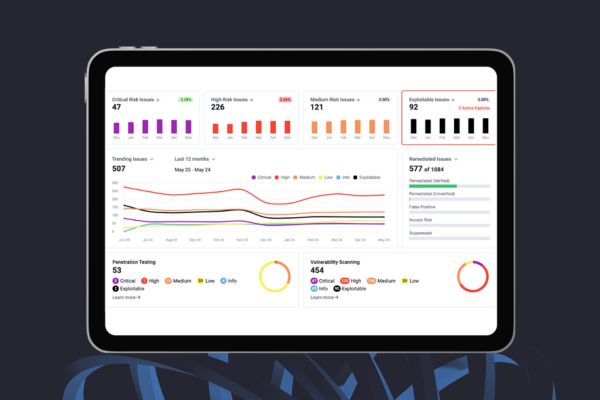.ZIP Domain Registration:
A Risky Gateway to Nefarious Outcomes
In the ever-evolving world of cybersecurity, understanding emerging threats is critical to maintaining a robust defence. One trend currently attracting attention is the registration of .ZIP domains. This is raising concerns within the cybersecurity community due to its potential misuse for nefarious purposes, primarily phishing attacks. Let’s delve deeper into this growing risk.
It all started on Friday, the 12th of May. It should’ve been a regular typical Friday, a nice and easy day before the weekend however, Google thought it would be good to release the pricing for the top-level domain `.ZIP`. On Twitter, there was an outcry within the cyber security community whereby security researchers and no doubt potential threat actors were purchasing nefarious `.ZIP` domain names. The most notable was John Hammond, a Cyber security icon. He posted a tweet and was seen to be purchasing lots of .ZIP domain names, there were others like the malware archive platform vx-underground joking about purchasing `infected.ZIP` or `whatisthepassword.ZIP` (if you know, you know). There is a lot of chatter from a few cyber security professionals, who believe there is no need for the .ZIP TLD and that it will cause more harm than it’s worth.
.ZIP Domains: A Brewing Storm
Firstly, it’s important to clarify what we mean by .ZIP domains. We’re not talking about .zip files, which are commonly used to compress and share files. Instead, we’re referring to domain names that end in .zip, much like .com or .org.
At first glance, the use of .ZIP as a domain extension might seem harmless or even innovative. After all, domain extensions have expanded beyond the traditional .com, .net, and .org to include a wide variety of terms. However, the potential misuse of .ZIP domains for malicious intent is where the problem arises.
Phishing Threats and .ZIP Domains
Phishing is a prevalent cybersecurity threat where attackers impersonate legitimate organizations to trick individuals into revealing sensitive information, such as login credentials or credit card numbers. This deception often takes the form of an email that appears to come from a trusted source and includes a link to a counterfeit website designed to collect the user’s information.
The primary concern with .ZIP domains is their potential to add a veneer of legitimacy to these phishing attempts. For instance, a phishing email might include a link to a .ZIP domain that, at a quick glance, appears to be a .zip file hosted on a legitimate site. This sleight of hand can easily trick users into clicking on the link, leading them to a malicious site and furthering the attacker’s phishing attempt.
The Risk Assessment
The potential for abuse of .ZIP domains is significant. Given the widespread use and familiarity of .zip files, there’s a real risk that users could mistake a .ZIP domain for a harmless file, leading to an increase in successful phishing attacks. Furthermore, traditional security tools may not immediately recognize these domains as potential threats, making them a powerful tool for cybercriminals.
Why It Matters
Allowing .ZIP domain registration opens up a Pandora’s box of cybersecurity threats. While innovation and expansion in the internet’s architecture are generally positive, they should not come at the expense of user safety. Balancing progress with security is a challenge the tech industry continually faces.
Conclusion
As the risk landscape continues to evolve, understanding and addressing new threats like .ZIP domains is essential. Awareness is the first line of defence. By understanding the potential misuse of .ZIP domains, we can better prepare and protect ourselves against these emerging threats. It is crucial for domain registration bodies, cybersecurity professionals, and internet users to work together to mitigate these risks and ensure a safer digital environment for all.
Cognisys recommends several proactive measures that individuals, organisations, and internet service providers can take to mitigate the risks associated with .ZIP domains:
1. Web Filter Configuration: Web filters can be set up to block access to .ZIP domains. This could be a useful first line of defence for organisations looking to prevent employees from inadvertently accessing malicious sites.
2. Firewall Rules: Firewalls can be configured to block traffic to and from .ZIP domains. This can prevent malicious software from communicating with control servers if a device does become compromised.
3. User Awareness Training: One of the best defences against phishing attacks is an informed user base. Regular training sessions can ensure that users are aware of the risks associated with .ZIP domains and other phishing tactics. They should be educated to verify the legitimacy of links before clicking and to report suspicious emails to the IT department.
4. Email Filter Configuration: Email filters can be set up to flag or block emails containing .ZIP domain links. This can help prevent phishing emails from reaching users in the first place.
5. DNS Filtering: Use DNS filtering services to automatically block known malicious domains, including those with .ZIP extensions.
Remember, no single method will provide complete protection. A multi-layered approach combining these strategies will offer the best defence against the misuse of .ZIP domains. Get in touch with the cyber security experts today and enhance your cyber security posture.
Subscribe to receive the latest cyber insights
RECENT UPDATES
Let’s make things happen
Fill in the form and one of our team will be in touch for a no-obligation discussion or quote regarding your requirements.
info@cognisys.co.uk
Leeds office
5 Park Place
Leeds
LS1 2RU



